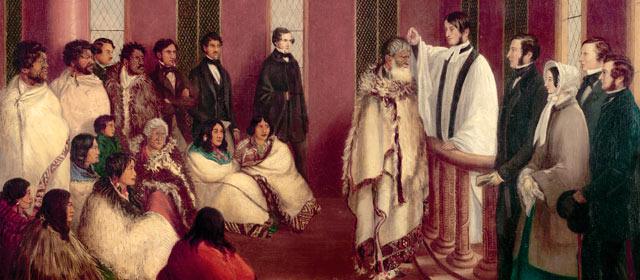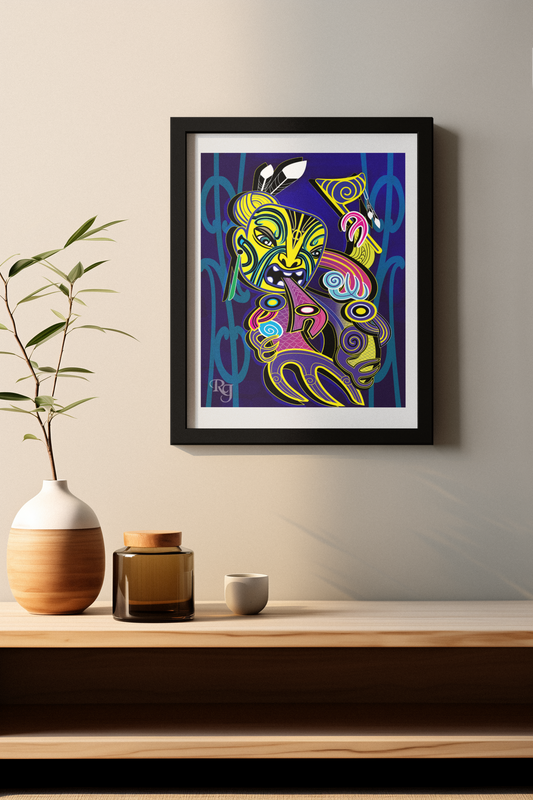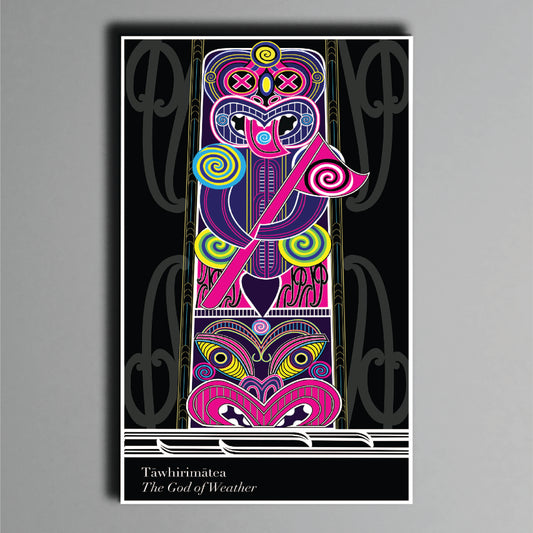
The Missionaries Use of Māori Art: A Controversial Assimilation Technique
Share
In 19th century New Zealand, appropriation of traditional Māori art practices became a powerful tool to convert Māori to Christianity.
The Church Missionary Society (CMS) sought to bring Christianity to Māori. To do so, Missionaries adopted creative elements of Māori culture such as pūrakau (Māori creation stories) and whakairo (wood carvings), merging them with biblical themes and religious context.
Māori had such a unique and rich culture which european settlement found fascinating, especially toi Māori (Māori art). British Expansion was known for its efforts to convert its Christian beliefs on indigenous peoples. So, it was not surprising that the Missionaries introduced and enforced their religion on Māori culture.

The signing of the Treaty of Waitangi, February 6th, 1840 - Marcus King [2]
The Missionaries' use of toi Māori and in particular kōwhaiwhai patterns was just one of the many ways they tried to assimilate Māori into Christianity. Missionaries believed that Māori art, like their reo (language) and tikanga (customs), was a significant barrier to their religious views.

Thomas Kendall with Waikato (left) and Hongi Hika in London in 1820 [3]
Therefore they set about developing and bringing toi Māori into a Christian context and it was common to see kōwhaiwhai patterns being used throughout churches in the late-1800s. Church architecture used kōwhaiwhai patterns within the rafters, and it was common to see kōwhaiwhai being used within church furniture like communication tables and pews [3].
Using kōwhaiwhai patterns within the church as a way to assimilate and control.
Kōwhaiwhai was blended in with other religious motifs like celtic and roman scripture and often fused into crucifixes' within the church. An appropriation blender of indigenous and religious motifs adorn many Anglican churches within New Zealand, yet the narrative is continuously swept under the carpet.

Changing indigenous spirituality and fusing it with religion
The Missionaries believed that by translating the Bible into te reo Māori and incorporating pūrakau and karakia (prayers), they could make Christian teachings more relatable to Māori.

A translation of the Bible into Māori [5]
The Missionaries’ underlying assumption was that the Māori culture was inferior to British culture, and Christianity was the only way to save the Māori from their inevitable decline. The missionaries' use of Māori art, in this sense, was a form of cultural appropriation, and it had significant long term consequences on Māori culture.
The Missionaries didn't just appropriate toi māori, they also wanted to eradicate Tā Moko.
Tā moko is a unique expression of cultural heritage and identity through tattoo. Tā Moko is considered tapu (sacred) and a cultural practice only for Māori. However, with the arrival of European missionaries, the practice underwent significant threat. Missionaries tried to eradicate the existence of tā moko practices. [7]
As colonisation continued, tā moko was marginalised and almost eradicated. Missionaries particularly played a role in the decline, labelling it as "the Devil’s art" (Te Awekotuku, 2002, p. 125). [8]
By 1840, colonialism had taken its toll on Māori traditions. Missionary influences discouraged body modification practices among all Pacific Island peoples (Blackburn, 1999). [9]

Samuel Marsden conducts first sermon in Bay of Islands [10]
In conclusion, the Missionaries use of Māori art as an assimilation technique was a complicated and controversial issue that had long-lasting consequences on Māori culture
While Māori faced significant challenges during this time, their strong resistance and commitment to their culture ensured that toi Māori and traditions would endure, even in the face of an oppressive colonial power.
Today, it is vitally important to support Māori arts practitioners, as this allows for the protection of indigenous arts and culture. We have to collectively work together to draw these narratives out and let people understand what Māori have had to do, to keep their culture and art practices alive.
References





